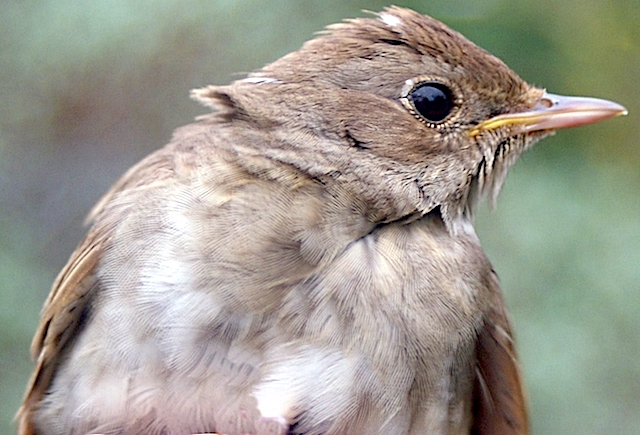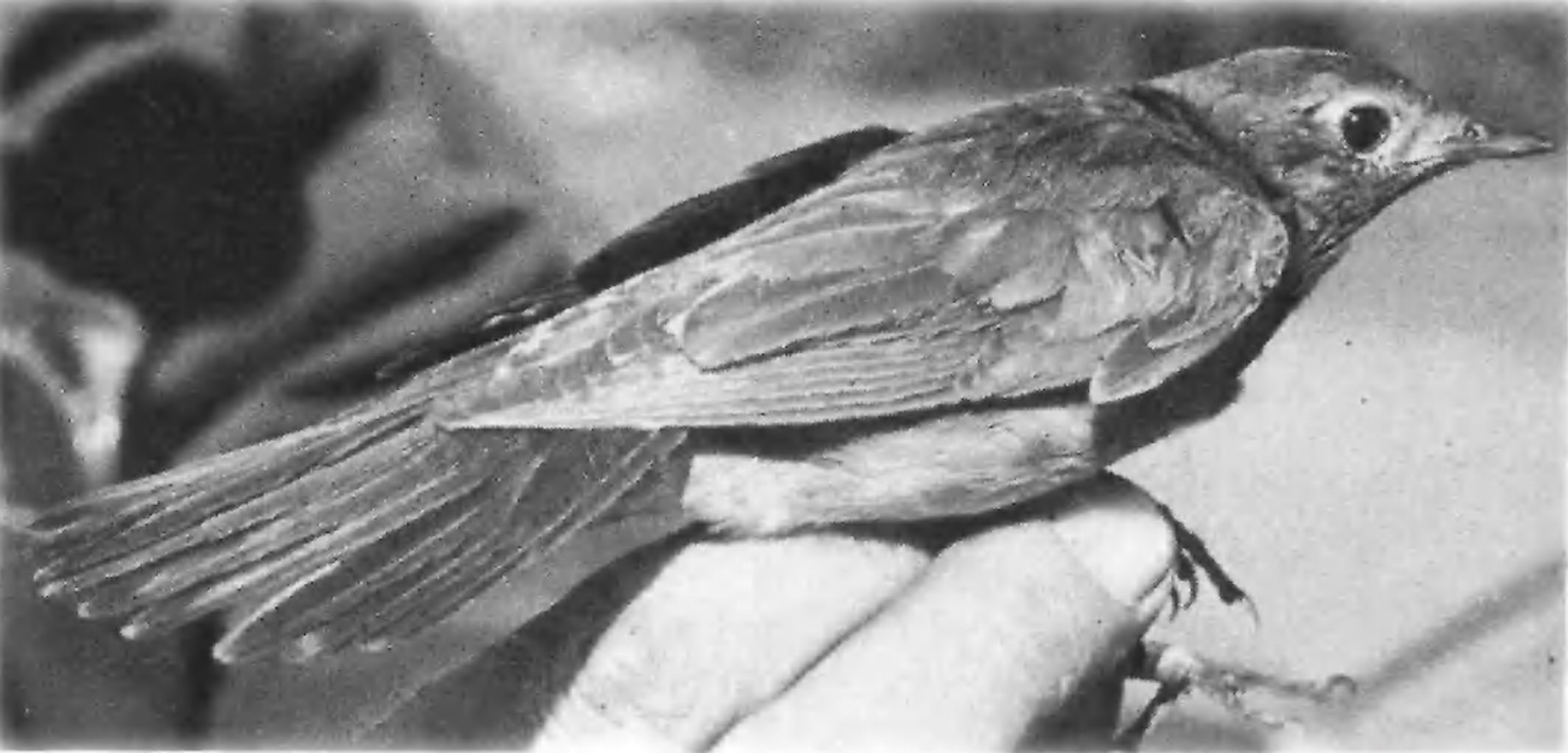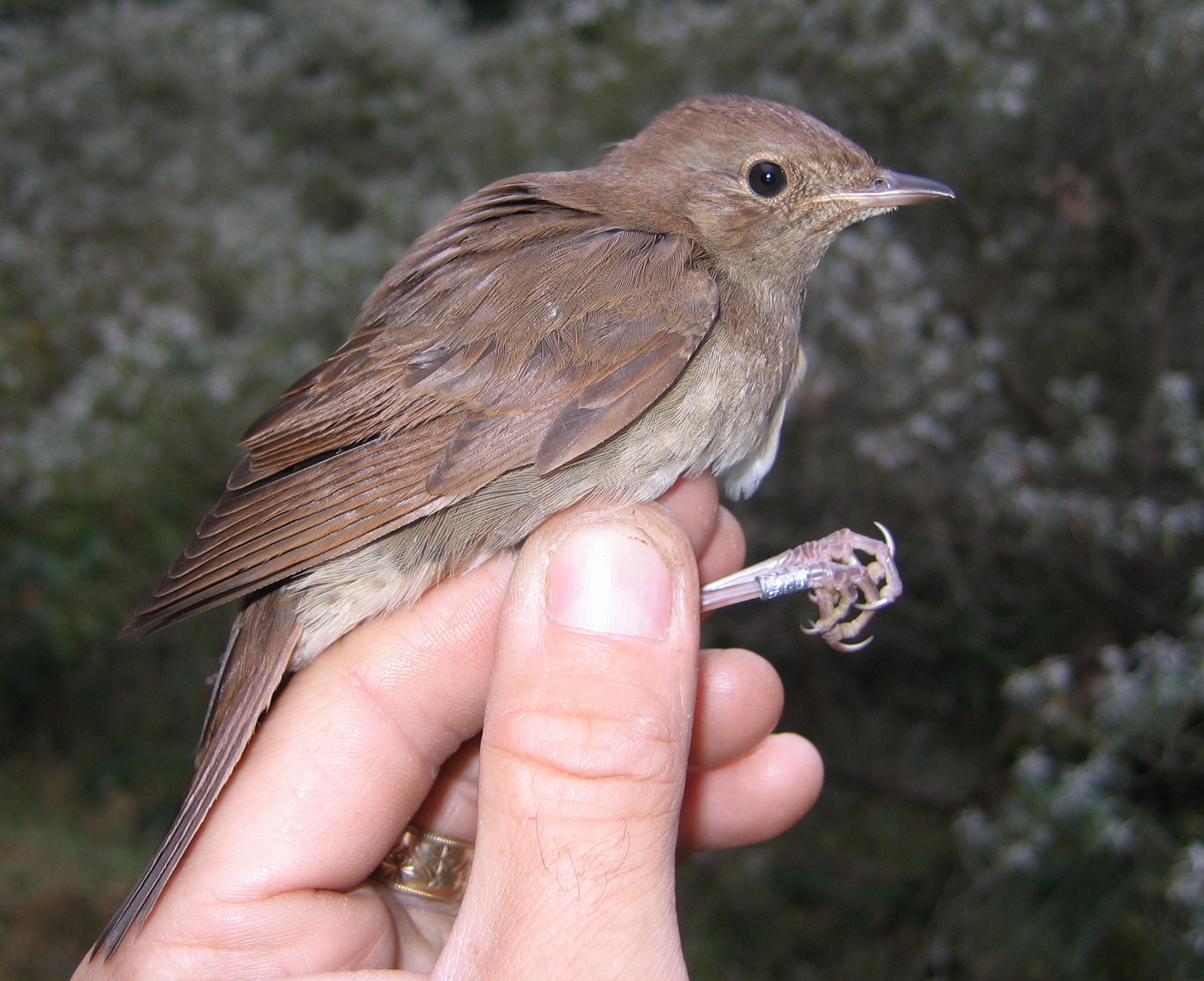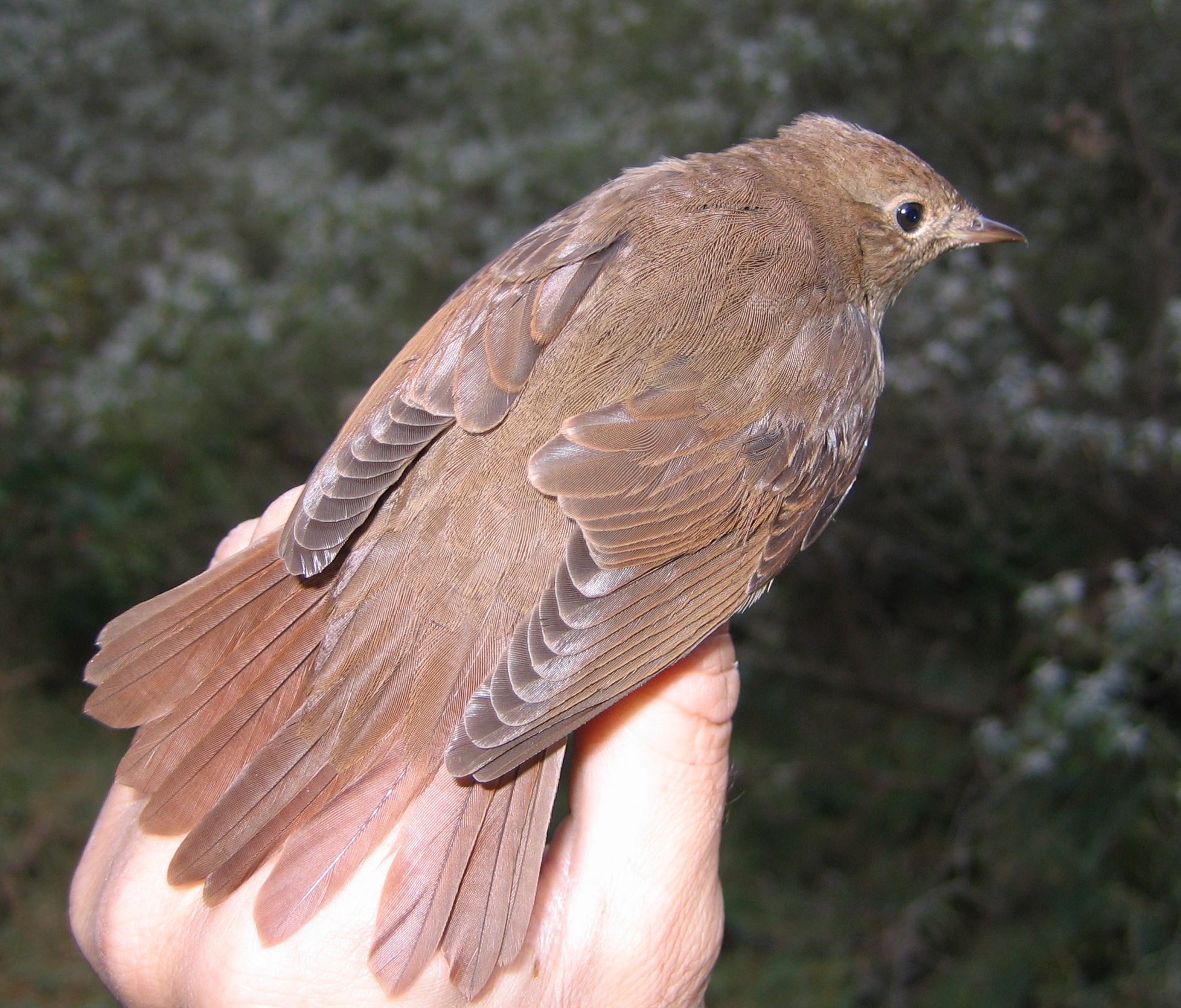Thrush Nightingale Luscinia luscinia

Thrush Nightingale, both trapped: left, Donna Nook May 16th 2009 (James Siddle) and centre/right Gibraltar Point September 19th 2009 (Mick Briggs)
This inveterate skulker has occurred on nine occasions, largely thanks to coastal ringing groups who have accounted for seven of the records. The bird in May 2001 was not seen but sound-recorded, leaving the Donna Nook bird in May 1994 as the only one which was found and observed in the field, so unsurprisingly our photographs are only of birds in the hand! The five spring records turned up between May 15th-22nd and the four in autumn between September 2nd-19th. Given the extensive, impenetrable Sea Buckthorn, Hippophae rhamnoides, cover along the coast, it is fair to surmise that more of these birds have been missed than found. There were only two British records prior to 1958, both on Fair Isle. Numbers in the UK still fluctuate greatly on an annual basis with its relative rarity here related to the orientation of its north-south migration route from east Africa.
The vast majority of British records have been on the east coast, but with a few inland records too. Thrush Nightingale is a common breeder in Scandinavia and there have been marked increases throughout its range there; for example in Finland it increased from around 200 pairs in the 1950s to an estimated 18,000-25,000 pairs in 2006-2010 (Third Finnish Breeding Bird Atlas). Despite this, British records remain steady at 4-5 per year. The BTO Online Ringing data show that 127 of the 226 birds to 2019 have been trapped. There was just one retrap, a bird ringed in Norway in August 1984 was retrapped in Sussex 12 days later.
| Site | First date | Last date | Count | Notes |
| North Somercotes Warren | 22/05/1977 | 1 | Trapped, ring number NA53370. | |
| Saltfleetby-Theddlethorpe Dunes NNR | 03/09/1977 | 09/09/1977 | 1 | Trapped; retrapped on September 4th, 6th, 9th and 10th; weights recorded bewteen 25.9-30.8g. |
| Saltfleetby-Theddlethorpe Dunes NNR | 02/09/1984 | 1 | Trapped, ring number C089968, weight 26.7g. | |
| Pye's Hall, Donna Nook | 22/05/1994 | 1 | Observed in the field | |
| Saltfleetby-Theddlethorpe Dunes NNR | 17/09/1994 | 1 | 1CY bird, trapped, weight 21.5g. | |
| Gibraltar Point NNR | 15/05/2001 | 1 | Singing male, accepted by BBRC on this basis, bird not seen | |
| Gibraltar Point | 19/05/2003 | 26/05/2003 | 1 | Singing 2CY male, trapped May 23rd, ring number R396539, weight 28.5g. |
| Donna Nook | 16/05/2009 | 1 | 2CY bird, trapped; showed some anomalous white feathers on crown and nape | |
| Gibraltar Point NNR | 19/09/2009 | 26/09/2009 | 1 | 1CY bird trapped on September 19th and retrapped on 26th |
| Frampton Marsh | 08/05/2024 | 1 | 2CY+, singing male, sound recorded | |
| Saltfleetby-Theddlethorpe Dunes NNR | 09/05/2024 | 1 | 2CY+, singing male, sound recorded, seen briefly. |
Finder’s report: Thrush Nightingale at North Somercotes Warren, May 22nd, 1977, first county record.
by P. J. Wycherley and C. Morrison
Note: this account is based on the original BBRC submission. The RC report for 1977 noted that Thrush Nightingale was once a true rarity, and that it has missed only one year in the last eight. The seven records in 1977 match the previous peak in 1970 and brought the British total to 37 records. Range expansion has been recorded in Norway. This was the first county record, and there was a second one caught in the autumn.
Circumstances
A Thrush Nightingale was caught in a mist-net at North Somercotes Warren by PJW. The warren is a 15 yr.-old forestry plantation about 2 km. from the sea. The net was set in willow scrub between two ponds. It was ringed with ring number NA53370. Before release the bird was seen by other observers and photographed by Keith Atkin, County Bird Recorder.
Description
Head and upperparts – forehead, crown, mantle, back and rump were dull olivaceous brown. Uppertail coverts mid-brown. Head uniform with upperparts. Chin very pale creamy white, sides of throat greyish.
Tail feathers mid-brown tinged rufous on outer webs. Upper wing coverts rich, mid-brown. Primaries dull brown with pale outer edges. Underwing coverts and axillaries pale with narrow grey barring. Primaries showed signs of moderate wear.
Underparts – breast greyish, breast feathers creamy white at base with darker grey tips giving an overall mottled effect. Flanks dull grey-brown. Belly pale creamy white becoming yellowish on undertail coverts.
Bare parts – eyes dark brown, slight pale eye ring. Gape flange yellow, pronounced. Upper mandible dark grey. Lower mandible yellowish. Legs purplish-brown.
Biometrics – wing 85 mm; tail 66 mm. Wing formula as follows:
2 3 4 5 6 7 8 9 10
PJW – first primary 5mm < primary coverts -2 L -3 -7 -10 -13 -15 -19 -22
CM - first primary 6mm <primary coverts -2 L -3 -7 -10 -13 -15 -19 -21
Only third primary was emarginated; both wings identical.

Thrush Nightingale caught at North Somercotes Warren, May 22nd, 1977 (Keith Atkin).
References



